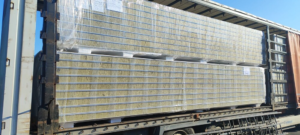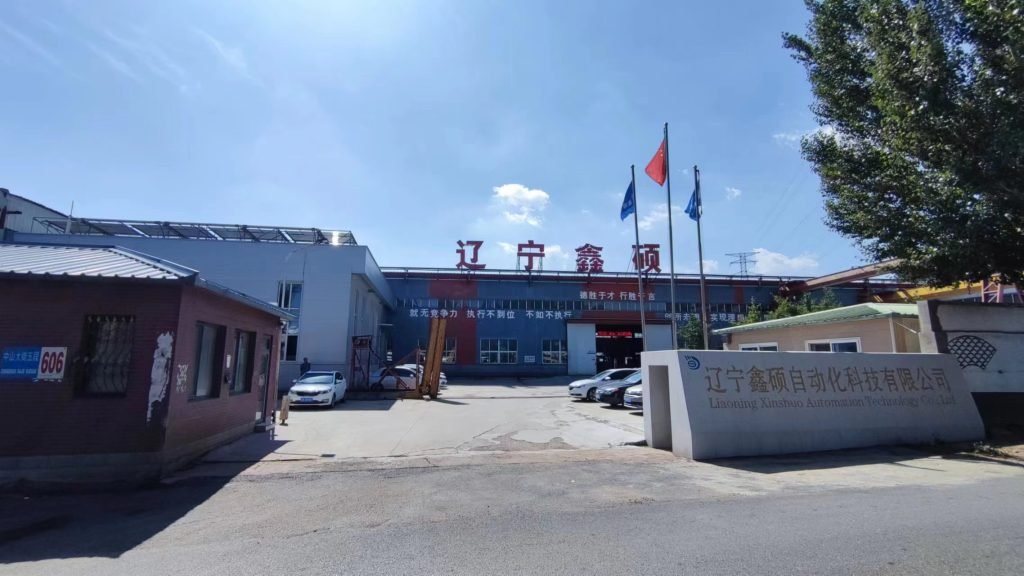Sandwich panels have become an indispensable component in modern construction, offering a combination of structural strength, thermal insulation, and aesthetic versatility. The production of these panels relies on advanced machinery known as the sandwich panel production line. This article provides an in-depth exploration of sandwich panel production lines, covering their design, components, operational principles, technical specifications, applications, and advancements in the field. With a focus on professionalism and technical detail, this guide is tailored for engineers, manufacturers, and industry professionals seeking to understand or optimize this critical manufacturing process.
Introduction to Sandwich Panels and Production Lines
Sandwich panels are composite structures typically consisting of two outer layers (skins) and a lightweight core material sandwiched between them. The outer layers are often made of metal (such as steel or aluminum), while the core can be composed of materials like polyurethane (PU), polystyrene (EPS), rock wool, or other insulating substances. These panels are widely used in industries such as construction, refrigeration, and transportation due to their excellent insulation properties, lightweight nature, and ease of installation.
A sandwich panel production line is an automated or semi-automated system designed to manufacture these panels efficiently and consistently. The production line integrates various processes, including material preparation, forming, bonding, cutting, and stacking, into a streamlined workflow. Modern production lines are engineered to meet diverse specifications, allowing manufacturers to produce panels of varying sizes, thicknesses, and material compositions to suit specific applications.
Components of a Sandwich Panel Production Line
A typical sandwich panel production line comprises several key components, each playing a critical role in the manufacturing process. Below is a detailed breakdown of these components:

1. Decoiling System
The decoiling system is the starting point of the production line. It unwinds metal coils (usually steel or aluminum) that serve as the outer skins of the sandwich panels. The system includes decoiler units equipped with hydraulic or mechanical mechanisms to ensure smooth and controlled unwinding. Advanced decoilers may feature tension control and alignment systems to prevent material distortion.

2. Roll Forming Machine
The roll forming machine shapes the flat metal sheets into the desired profiles, such as corrugated or flat surfaces, depending on the panel design. This machine uses a series of rollers to gradually bend and form the metal, ensuring precision and uniformity. Adjustable rollers allow for customization of panel dimensions and profiles.
3. Core Material Processing Unit
The core material processing unit prepares the insulating material that forms the panel’s core. For polyurethane (PU) panels, this unit includes a high-pressure foaming machine that mixes polyol and isocyanate to create the foam, which is then injected between the metal skins. For EPS or rock wool panels, the unit cuts and positions pre-formed core materials accurately.
4. Laminating System
The laminating system bonds the outer skins to the core material. This process typically involves applying adhesive (in some cases) and pressing the layers together under controlled temperature and pressure. For PU panels, the foam expands and hardens within the laminating section, creating a strong bond without additional adhesives.
5. Cutting Unit
Once the panels are formed, the cutting unit trims them to the specified length. This can be achieved using flying saws, circular saws, or band saws, depending on the line’s configuration. Precision cutting ensures that panels meet exact dimensional requirements.
6. Cooling and Stacking System
After cutting, the panels may pass through a cooling section to stabilize the core material (especially for PU panels). The stacking system then organizes the finished panels into neat piles for packaging and transportation.
Operational Principles of Sandwich Panel Production Lines
The operation of a sandwich panel production line follows a sequential process designed to maximize efficiency and product quality. Below is a step-by-step explanation of the workflow:
- Material Loading: Metal coils are loaded onto the decoilers, and core materials are prepared in the processing unit.
- Forming and Profiling: The roll forming machine shapes the metal sheets into the desired profile.
- Core Injection or Placement: The core material is either injected (e.g., PU foam) or placed (e.g., EPS boards) between the metal skins.
- Lamination: The layers are pressed together, and the core material bonds with the skins under controlled conditions.
- Cutting: The continuous panel is cut into specified lengths.
- Cooling and Stacking: The panels are cooled (if necessary) and stacked for further handling.
Automation plays a significant role in modern production lines, with programmable logic controllers (PLCs) and human-machine interfaces (HMIs) overseeing the process. This ensures consistency, reduces human error, and allows for real-time monitoring of production parameters.
Technical Specifications of Sandwich Panel Production Lines
The specifications of a sandwich panel production line vary depending on the manufacturer and intended application. Below is a table summarizing typical technical parameters:
| Parameter | Typical Range | Description |
|---|---|---|
| Panel Width | 600–1,200 mm | Width of the finished sandwich panel |
| Panel Length | Up to 15 m (customizable) | Length determined by cutting unit |
| Panel Thickness | 30–200 mm | Depends on core material and application |
| Production Speed | 3–15 m/min | Speed of continuous panel production |
| Metal Thickness | 0.3–0.8 mm | Thickness of steel or aluminum skins |
| Power Consumption | 30–150 kW | Total power required for operation |
| Core Material | PU, EPS, Rock Wool | Options for insulation layer |
These specifications can be tailored to meet specific customer requirements, such as producing thicker panels for cold storage or lightweight panels for modular buildings.
Types of Sandwich Panel Production Lines
Sandwich panel production lines are classified based on their automation level, core material, and production method. The main types include:
1. Continuous Production Lines
Continuous lines produce panels in an uninterrupted process, with all stages (forming, foaming, laminating, cutting) occurring simultaneously. These lines are highly efficient and suitable for large-scale production. They are commonly used for PU and EPS panels.
2. Discontinuous Production Lines
Discontinuous lines produce panels in batches, with separate stages for core preparation, assembly, and pressing. These lines offer greater flexibility for small-scale or custom production but are less efficient than continuous lines.
3. Specialized Lines
Some lines are designed for specific core materials, such as rock wool or phenolic foam, requiring unique handling and processing equipment. These are often used for fire-resistant or high-insulation panels.
Applications of Sandwich Panels
Sandwich panels manufactured by these production lines serve a wide range of industries. Key applications include:
- Construction: Used in walls, roofs, and partitions for industrial buildings, warehouses, and residential structures.
- Cold Storage: PU panels with high insulation properties are ideal for refrigerated warehouses and food processing units.
- Transportation: Lightweight panels are used in vehicle bodies, such as trailers and caravans.
- Prefabricated Structures: Modular homes and temporary shelters benefit from the ease of assembly and durability of sandwich panels.
Advantages of Modern Sandwich Panel Production Lines
Advancements in production line technology have enhanced their performance and output quality. Key advantages include:
- High Efficiency: Continuous lines achieve rapid production rates, reducing lead times.
- Precision: Automated systems ensure consistent panel dimensions and quality.
- Versatility: Adjustable settings allow for the production of various panel types and sizes.
- Energy Efficiency: Modern lines incorporate energy-saving features, such as optimized heating and cooling systems.
- Reduced Waste: Accurate cutting and material handling minimize material loss.
Challenges in Sandwich Panel Production
Despite their advantages, sandwich panel production lines face several challenges:
- Material Costs: High-quality metal and core materials can increase production expenses.
- Maintenance: Complex machinery requires regular upkeep to prevent downtime.
- Environmental Concerns: The use of certain chemicals (e.g., in PU foaming) raises sustainability issues, prompting research into eco-friendly alternatives.
- Skilled Labor: Operating and maintaining advanced lines demands trained personnel.
Advancements and Trends in Sandwich Panel Production Lines
The sandwich panel industry is evolving with technological innovations and market demands. Notable trends include:
1. Automation and Industry 4.0
Integration of IoT (Internet of Things) and smart sensors allows for real-time monitoring, predictive maintenance, and data-driven optimization of production lines.
2. Eco-Friendly Materials
Manufacturers are exploring bio-based foams and recyclable materials to reduce the environmental footprint of sandwich panels.
3. Modular Design
New production lines feature modular components, enabling easy upgrades or reconfiguration for different panel types.
4. Enhanced Fire Resistance
Lines designed for rock wool or phenolic foam panels are gaining popularity due to stricter fire safety regulations in construction.
Case Study: Optimizing a PU Sandwich Panel Production Line
To illustrate the practical application of these concepts, consider a hypothetical case study of a manufacturer optimizing a polyurethane (PU) sandwich panel production line:
Scenario: A company producing PU panels for cold storage units aims to increase output from 5 m/min to 10 m/min while maintaining quality.
Solution:
- Upgrade the foaming machine to a higher-capacity model with improved mixing efficiency.
- Install a faster conveyor system to handle increased production speed.
- Implement a dual-cutting saw to reduce cutting time without compromising precision.
- Use PLC upgrades to synchronize all components and minimize bottlenecks.
Results: After optimization, the production line achieves a 100% increase in output, reduces energy consumption by 15% through better synchronization, and maintains panel quality within tolerances.
Comparison of Core Materials in Sandwich Panels
The choice of core material significantly impacts panel performance. Below is a comparison table:
| Core Material | Thermal Insulation | Fire Resistance | Weight | Cost |
|---|---|---|---|---|
| Polyurethane (PU) | Excellent | Low | Light | Moderate |
| Polystyrene (EPS) | Good | Low | Very Light | Low |
| Rock Wool | Moderate | Excellent | Heavy | High |
| Phenolic Foam | Excellent | High | Light | High |
This table helps manufacturers select the appropriate core material based on project requirements, such as insulation needs or fire safety standards.
Conclusion
The sandwich panel production line is a cornerstone of modern manufacturing, enabling the efficient production of high-performance building materials. From decoiling to stacking, each component and process is meticulously designed to ensure quality, speed, and adaptability. As technology advances, these production lines are becoming more automated, sustainable, and versatile, meeting the evolving demands of industries worldwide.
For manufacturers, investing in a well-designed production line tailored to specific needs can yield significant returns through improved productivity and product quality. By understanding the technical intricacies, applications, and emerging trends outlined in this guide, industry professionals can make informed decisions to optimize their operations and stay competitive in the global market.
Whether used in towering warehouses, refrigerated facilities, or modular homes, sandwich panels produced by these sophisticated lines continue to shape the future of construction and beyond.



